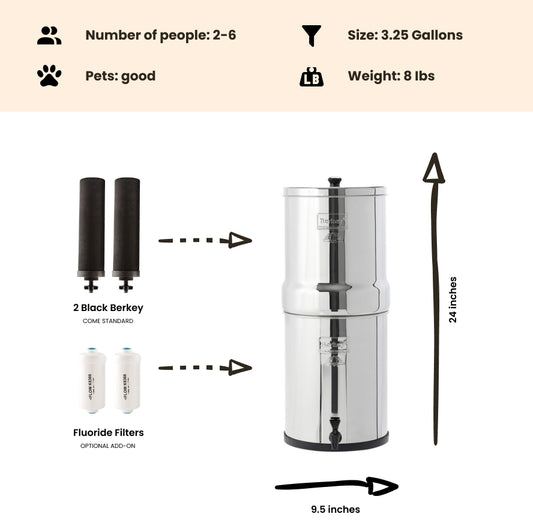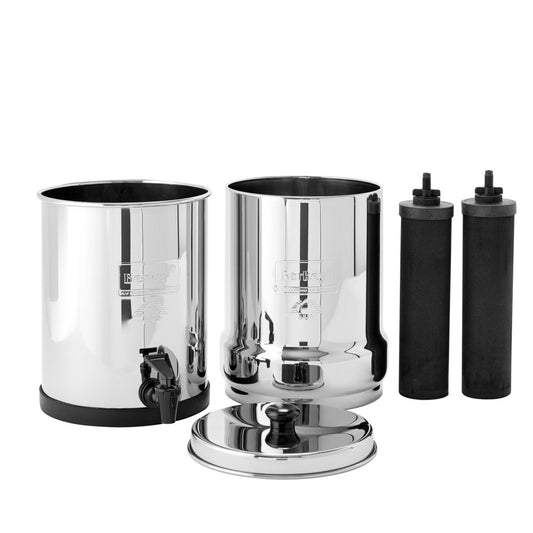
Lead Detectives: Searching for Causes of Elevated Lead in Drinking Water
By Dan DeBaunShare
Manganese is a mineral that is not considered toxic, and should be included in the diet to maintain good health. However, new research conducted by scientists at Washington University in St. Louis has revealed that when manganese that naturally occurs in water combines with certain chemicals, it result in significant changes in water flowing through lead pipes. Depending on the chemical disinfectants used, those changes can pose a serious risk to human health.
The study, which was recently published in the scientific journal Environmental Science and Technology, focused on lead dioxide (PbO2) which is not readily soluble in water by itself. Unlike lead carbonate (PbCO3) that is more common in water and is responsible for the scale build up in water pipes, lead dioxide is less common in nature.
"You don't find PbO2 in the environment because there is no strong oxidizing agent," said Daniel Giammar, the Walter E. Browne Professor of Environmental Engineering at the McKelvey School of Engineering. "But good disinfectants are often good oxidizing agents."
Chlorine — commonly used to treat drinking water in the US and many other countries around the world — is not only a very good disinfectant, it's also a very effective oxidizing agent that can transform lead carbonate into lead dioxide.
"If you look at a system that has lead pipes and free chlorine, then you do the calculations, you'd expect that every single one would have lead dioxide on the pipes," said Giammar. However, this is usually not the case, which suggests that something else is playing a role when it comes to lead dioxide forming on the inside of the pipes in the water system. That something turns out to be manganese.
When oxidants are present in water, manganese is able to switch oxidation states. Should manganese come into contact with chlorine, it oxidizes and transforms into manganese oxide. After running computer simulations and conducting lab experiments that mimicked tap water running through water pipes, the researchers discovered that manganese oxide acts as a catalyst that promotes and speeds up the conversion of lead carbonate to lead dioxide.
"The chlorine is still the reactant that's driving the lead conversion, but the manganese oxide acts as a catalyst to make it faster," Giammar said.
This study may provide some insight into how substances react with each other affects the rate that lead transforms from one form to another. "What other things that aren't lead may be affecting these rates?" Giammar asks. For example, can iron oxides cause it? Aluminum is something else they would like to look at more closely too.
Further research is needed to gain a clearer understanding of the chemical reactions that influence the rate of lead transformation as well as its availability in water. Laboratory studies such as these can provide breakthroughs that could have significant health implications.
Washington D.C. Is a clear example. In 2000, due to issues associated with unpleasant treatment byproducts, the city switched from using chlorine to treat their drinking water to chloramine, a milder disinfectant. However, this came with unforeseen consequences.
According to Griammar, once the water authority started using chloramine, the lead dioxide in the pipe scale became unstable and quickly dissolved, causing lead concentrations in tap water to soar. This in turn led to other water systems that were considering switching from chlorine to chloramine to question whether lead dioxide could pose a problem. Yet, while many water systems experience lead dioxide in pipe scale found in lead pipes, other systems don't. These differences could potentially be explained by the difference in manganese concentrations found in different public water systems.
"How you're going to treat your water depends on the source and its composition, also your infrastructure," Giammar said. "There's no one size fits all."
The manganese effect was discovered by accident. The researchers were conducting another lab experiment using artificial tap water in lead pipes, which they treated with chlorine to see if it would form lead dioxide. They included components commonly found in drinking water: sodium, chloride, calcium and magnesium. However, according to Giammar, a new student who was working on the project added manganese instead of magnesium by mistake.
That's when things started to get weird. The water, which had been clear, suddenly became murky and black. The lead precipitated from the pipes for a couple of weeks before dying down. "We opened up the pipes and looked,"Giammar said. "Oh, we have the lead dioxide we were trying to make. The manganese just accelerated the process."Journal Reference Weiyi Pan, Chao Pan, Yeunook Bae, Daniel Giammar. Role of Manganese in Accelerating the Oxidation of Pb(II) Carbonate Solids to Pb(IV) Oxide at Drinking Water Conditions. Environmental Science & Technology, 2019; 53 (12): 6699 DOI: 10.1021/acs.est.8b0735
-
Regular price $234.00 USDRegular priceUnit price / per
-
Regular price $327.00 USDRegular priceUnit price / per
-
Regular price From $367.00 USDRegular priceUnit price / per
-
Regular price From $408.00 USDRegular priceUnit price / per
-

 Sold outRegular price From $451.00 USDRegular priceUnit price / per
Sold outRegular price From $451.00 USDRegular priceUnit price / per -
Regular price From $478.00 USDRegular priceUnit price / per
-
Regular price $332.50 USDRegular priceUnit price / per
$350.00 USDSale price $332.50 USDSale

Dan DeBaun is the owner and operator of Big Berkey Water Filters. Prior to Berkey, Dan was an asset manager for a major telecommunications company. He graduated from Rutgers with an undergraduate degree in industrial engineering, followed by an MBA in finance from Rutgers as well. Dan enjoys biohacking, exercising, meditation, beach life, and spending time with family and friends.
~ The Owner of Big Berkey Water Filters
















